Reducing risk through credit card fraud detection
Nikita Nawapet
Quantiphi, Business Analyst
Cody Irwin
Solutions Manager, Google Cloud
Practically every company relies on credit card transactions to fuel their business and facilitate the exchange of funds. In fact, many companies, especially those with digitally focused missions, now only accept credit card payments.
This market saturation has attracted a wave of bad actors looking to use the credit card momentum to their advantage. Global losses from payment fraud has tripled in the last 10 years. According to Merchant Savvy, payment fraud is expected to continue increasing and is projected to cost $40.62 billion in 2027—25% higher than in 2020. Credit card fraud was ranked the number one type of identity theft fraud. In the UK alone, 7.5p per £100 spent on cards was lost to fraud. With an overall £620.8 million loss due to fraud on UK-issued cards in 2019. (Source)
With the increased cost of managing and combating fraud, financial institutions are quickly realizing the importance of building and maintaining prediction models at scale for specific business challenges. Google Cloud provides a complete data cloud platform that scales automatically with real-time data processing (Dataflow), an extensible and adaptable data warehouse (BigQuery), built-in machine learning (BigQuery ML), and real-time inference (AI Platform) to help organizations save time and money when addressing their data and analytics goals. Quantiphi brings deep expertise that, when coupled with Google’s Data Cloud technologies, addresses and provides guidance on instrumenting specific solutions.
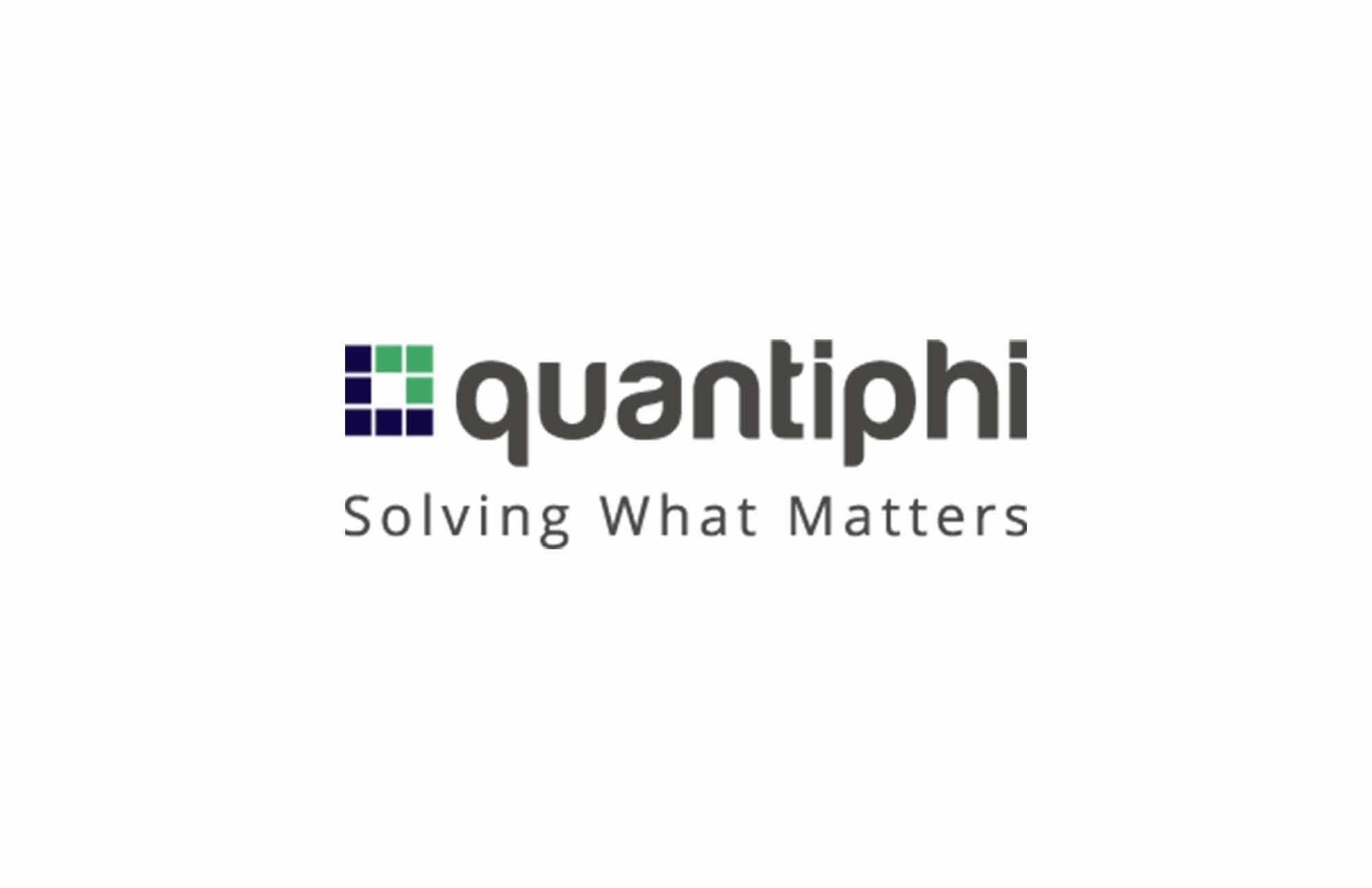

The need for an intelligent real-time solution
Classic fraud detection approaches leverage rule-based logic, and sometimes machine learning, to identify and operationalize mitigations for commonly occurring fraudulent transactions. This can be a long, labor-intensive and costly process since the volume of transactions, the complexity and types of fraud, and the speed at which action needs to be taken has increased since the first use of such systems. Any delay in detecting fraud can cause significant business loss to banks and financial institutions in terms of reputation, monetary loss, and time spent on investigation.
This credit card fraud detection approach focuses on the complete pipeline from data ingestion, to advanced analytics and inference using machine learning, through to a business-friendly dashboard that identifies and categorizes potential high-risk transactions and allows for action. The processing is real-time in nature so that fraud can be identified and mitigated when needed and the implementation approach is focused on approachability, scalability, and ease of adaptation to meet specific business needs.
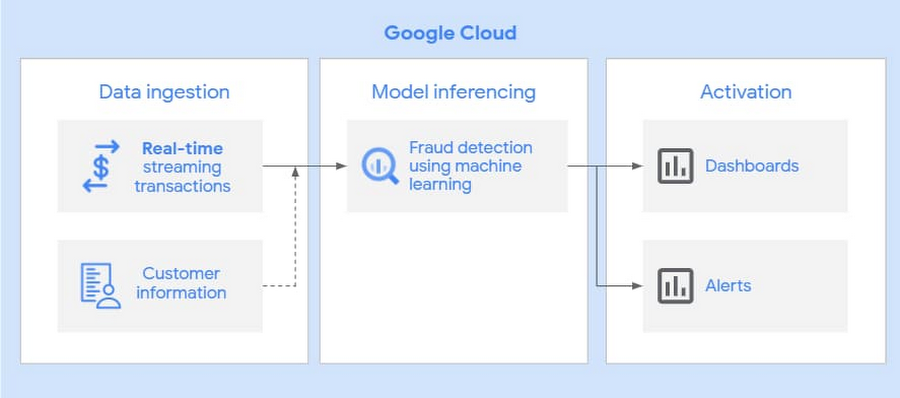

Deriving actionable insights
The insights identified in an advanced, real-time pipeline are only as good as your ability to use those insights. To make these findings actionable, this real-time fraud detection pattern has the ability to publish alerts for potential fraud. These notifications go to Pub/Sub and can be extended to work with other systems as needed. The pattern is also incorporated with a Data Studio dashboard for storytelling and generating impactful, business-oriented insights and a Cloud Monitoring dashboard to monitor the health of the pipeline and raise alerts to mitigate potential issues (see Technical Blog post for more details on this monitoring experience and options).
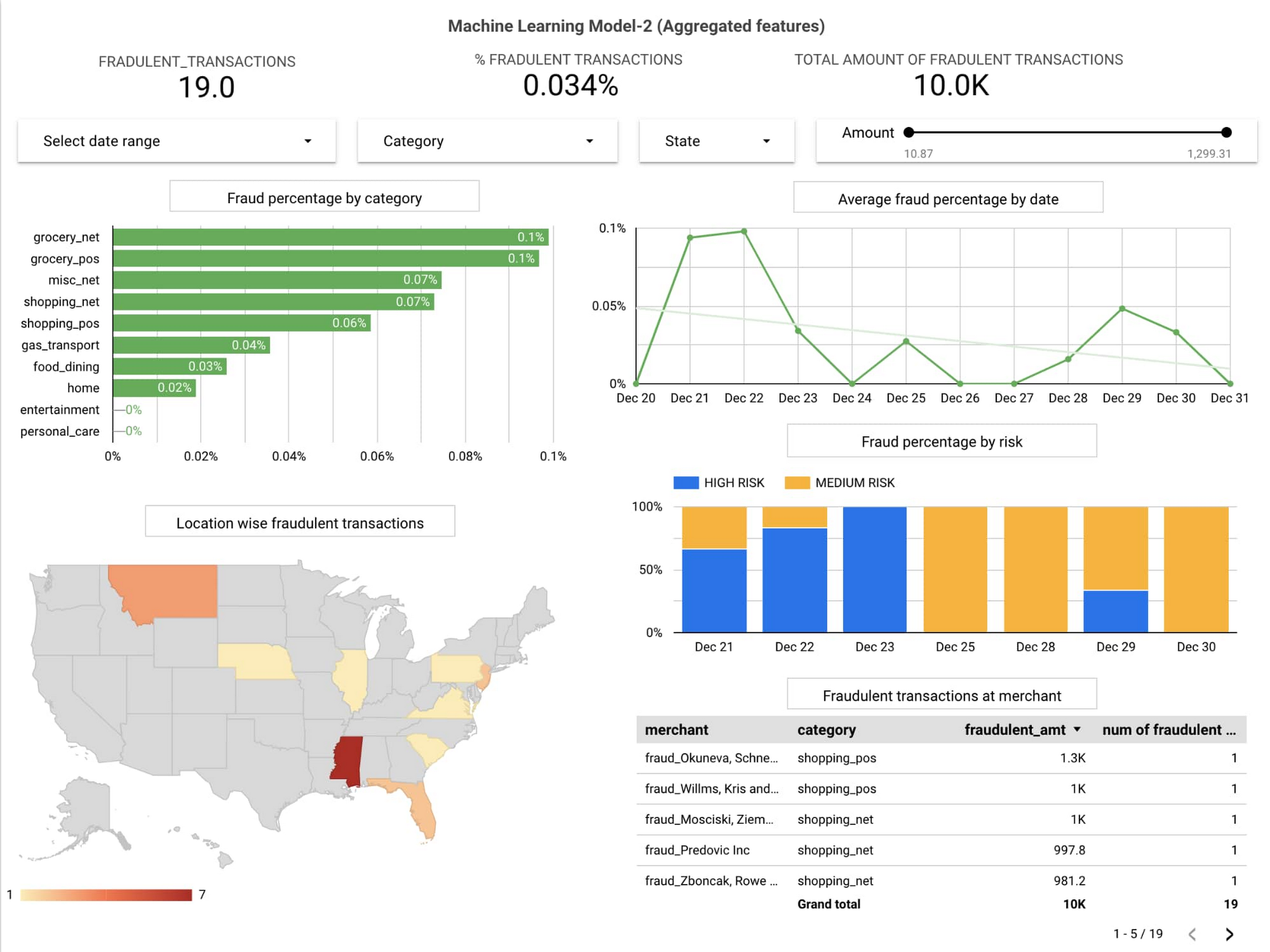

This dashboard provides an example of what an organization may see related to the numbers and percentages of fraudulent transactions and the amount lost to fraud, which can be analyzed by category, state, and merchant over a period of time. Investigators need the ability to find transactions with the highest risk, which is best addressed with a risk score and not just a binary classification of “fraudulent” or “genuine”.
Regarding the confidence level of fraud, transactions can be bucketed into low risk, medium risk, and high risk. These bucket ranges are easily customizable in the dashboard itself based on the risk appetite of the organization. The following shows an example of what this could look like.
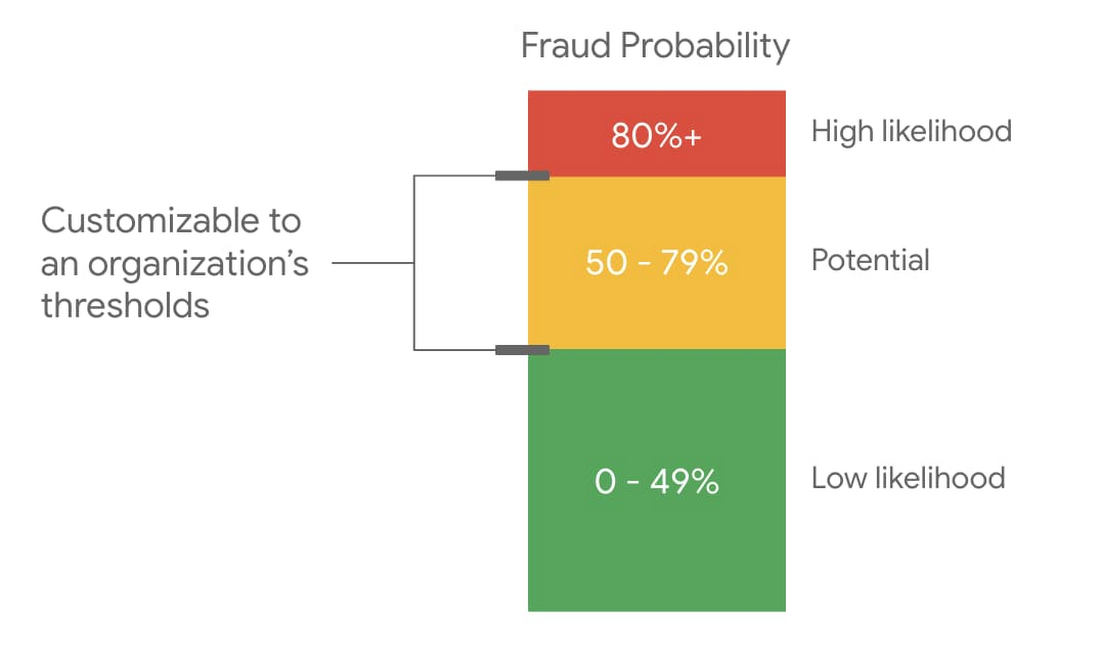

Results from this dashboard can be used to initiate appropriate actions such as added authentication layer for medium risk transactions, and preventing transactions for the high risk bucket.
Adapt the design pattern to your needs
Combining both customer demographic information and real-time transactional data streaming, we’ve built a solution that aligns with commonly used data schemas. Our pattern and demo leverage synthetically generated data so that you can quickly see how the solution works and adapt it to your specific setup.
Transaction and customer data is sensitive in nature, requiring due diligence to de-identify and protect certain values. Our credit card fraud detection solution can be augmented to leverage Cloud Data Loss Prevention to provide the protection you need and still allow for the required analytics and insights.
Unlocking scalable intelligence
A fast-moving risk requires a fast-adapting approach. In this case, two parallel running machine learning models provide the mechanisms to identify fraud both within standalone transactional and demographic data, as well as across time. The two model approach improves performance, better identifies threats, and reduces false positives that create unnecessary noise:
Data Analysis: The first model consumes transactional and demographic information, as is, from the dataset with a focus on real-time analysis.
Activity Analysis: To improve accuracy beyond what is available with standalone data, the second model analyzes historical credit card activity with the appropriate features to derive in-depth insights.
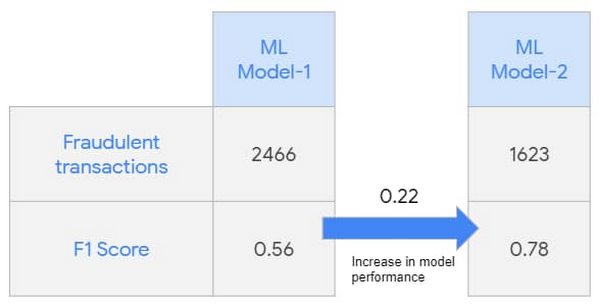

This example of noise reduction and improved accuracy demonstrates the potential for organizations to focus on the transactions that likely need attention, which can in turn lead to better utilization of internal resources and a foundation for improved customers experiences.
Give it a try
This approach is available to help you meet your organization’s needs. Please review our pattern details and check out our tutorial to learn more about this pattern and how it can be used and adapted. Feel free to reach out to our teams at Google Cloud and Quantiphi for help in making it work best for your company.
Sign up here to join our webinar to learn how to build a real-time credit card fraud detection solution. On March 25, we'll show you how to train a model in BigQuery ML, host the model on AI Platform for online predictions, use Dataflow to build a streaming pipeline, how to set up fraud notifications using Pub/Sub, and visualize operations with Data Studio.



